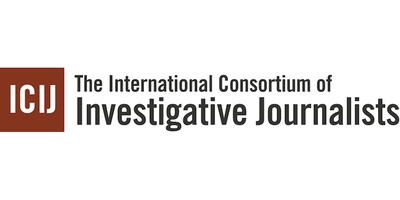Pollsters and election modelers suffered an industry-shattering embarrassment at the hands of Donald Trump on Tuesday night.
Trump had long said the polls were biased against him. His claims – dismissed and mocked by the experts – turned out to be true.
It’s going to put the polling industry out of business,” said CNN anchor Jake Tapper. “It’s going to put the voter projection industry out of business.”
Going into Election Day, a strong majority of pollsters and election modelers forecast that Hillary Clinton would coast to victory, with many predicting she would sweep the battlegrounds and win north of 300 electoral votes.
The final University of Virginia Center for Politics model had Clinton winning 322 electoral votes to 216 for Trump, with Clinton winning Florida, North Carolina, Pennsylvania, and Wisconsin – all states that she lost.
Liberals lashed out at data guru Nate Silver for giving Trump a 35 percent chance of victory heading into Election Day, claiming he was putting his thumb on the scale for Trump by making the race appear closer than it was.
Of the 11 national polls to be released in the final week of the race, only two – a Los Angeles Times-USC survey and one from IBD/TIPP – showed Trump with the lead.
The L.A. Times survey was criticized as “experimental” by industry experts for polling the same pool of people and for the way it weighted black voters.
But for the second consecutive presidential cycle, the L.A. Times and IBD/TIPP surveys were among the most accurate, making them the gold standard going forward.
The rest of the polls showed Clinton with leads of between 2 points and 6 points, boosting the Democrat to a 3.3 point national lead in the RealClearPolitics average.
And the battleground data was just as biased against Trump.
There were no surveys released this year from Wisconsin that showed Trump with a lead.
Clinton held a 6.5 point lead in the Badger State heading into Election Day, and the state was not even discussed as on par with Michigan or Pennsylvania as a potential blue state pick-up for Trump.
Trump’s victory in Wisconsin — a state that has not gone for the GOP nominee since 1984 — helped him seal the deal.
In Michigan and Pennsylvania, deep blue states the GOP candidate has not won in decades, polls showed the race tightening in the home stretch, but only one poll, from Trafalgar Group, showed Trump with the lead.
Election modelers declined to flip either state into Trump’s column, even as the Clinton campaign rushed furiously to defend those states in the final days of the election.
And Trump won North Carolina by nearly 4 points, despite polls showing a toss-up there.
Many early reports coming out of the Tar Heel State bought the Clinton campaign’s spin that Hispanic turnout had spiked to such a degree that it would make up for a decline in early voting among African Americans.
The conventional wisdom among many pollsters was that the race would be somewhat close nationally — in the two to three point range — with Clinton running the table, as President Obama did, in the battleground states that determine the outcome.
But state after state told the same story for Trump and Clinton.
White working class voters — the silent majority that Trump said was being underestimated by pollsters — swarmed for him on Election Day, particularly in the Rust Belt states, and helped him beat the polls.
Clinton could not turn out women, or the Obama coalition of minorities and young voters, in the same numbers to keep pace.
Pollster John Zogby believes that many in the industry weighted their polls too heavily in favor of Democrats, pointing to polls that had an 8 to 9 point advantage for the party, when it should have been in the 4 to 5 point range, he said.
It’s a claim that Trump made throughout the process.
But pollsters largely dismissed that notion, saying that Democrats turn out in larger numbers in a presidential election year and that Republicans were losing registered voters, who were increasingly identifying as independents.
That assumption will have to be reexamined.
Furthermore, many pollsters confidently predicted that women would reject Trump and vote in favor of Clinton’s history-making candidacy in record numbers.
An Associated Press analysis found Clinton bested Trump by 13 points among women — no better than the margin Obama got in 2008 or 2012.
Trump, meanwhile, got the support of 70 percent of white men without a college education, besting Mitt Romney’s showing by 10 points, the AP study found.
Whereas Obama received about 33 percent support from white men without a college degree, Clinton received just over 20 percent support.
Democratic strategist Steve Schale, an expert on Florida politics, said that in Volusia County, Florida, Trump beat Clinton among whites by 34,000. Obama won whites there in 2008 by nearly 14,000 there.
Few models or polls predicted there would be enough white voters to turn out to counterbalance demographic trends that were believed to tilt heavily in Clinton’s favor.
It is also possible that the third-party candidates – long forgotten by pollsters as they faded down the stretch – will end up having an outsized impact on the race.
Libertarian Gary Johnson took more than 3.5 percent support in Wisconsin and Michigan, enough to make up the difference between Trump and Clinton. He took 2.5 percent support in Pennsylvania, which was decided by about 1 point.
Whatever the reason, pollsters will have to reassess after a dismal showing in 2016 that produced a result almost no one foresaw.
